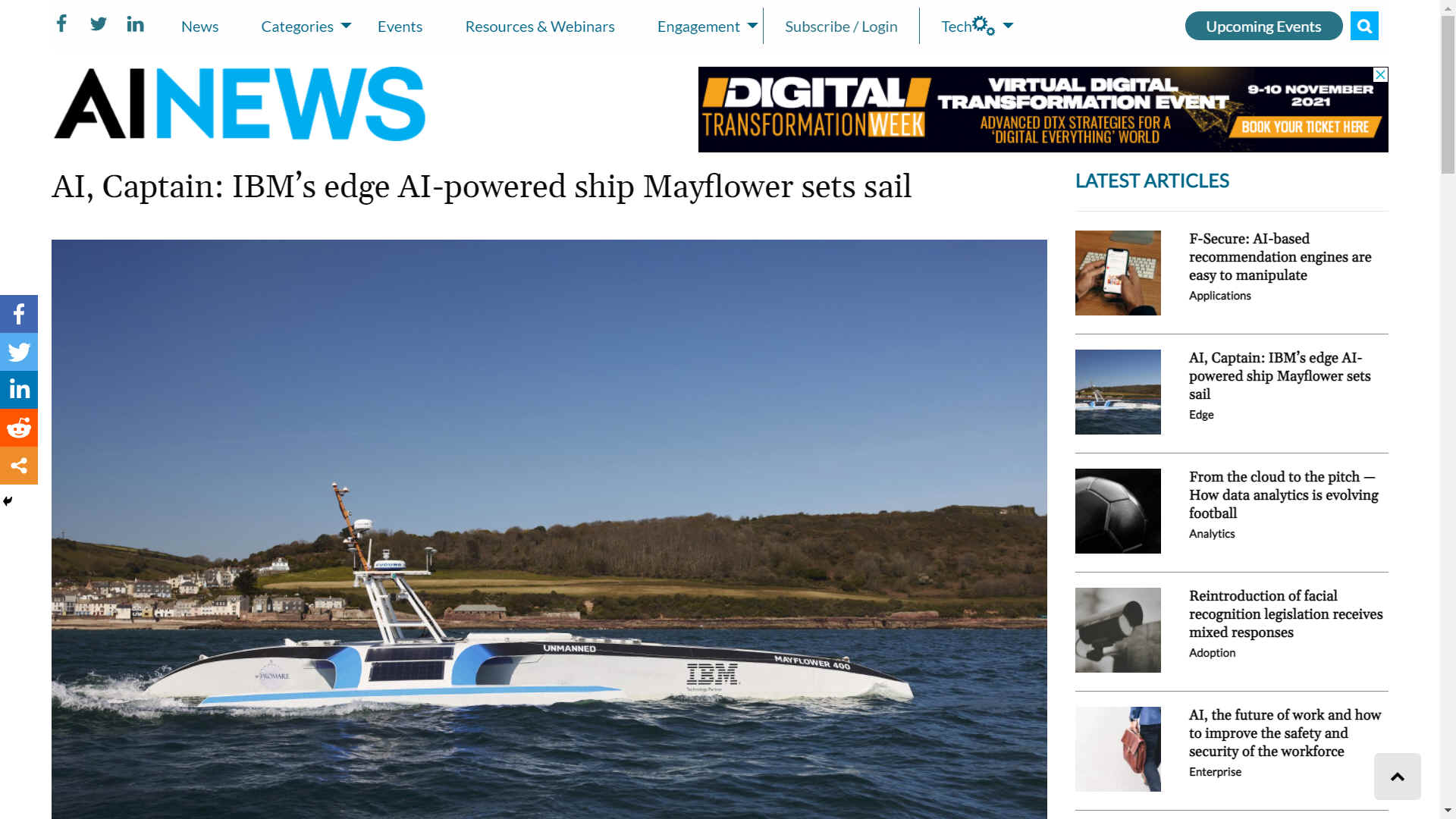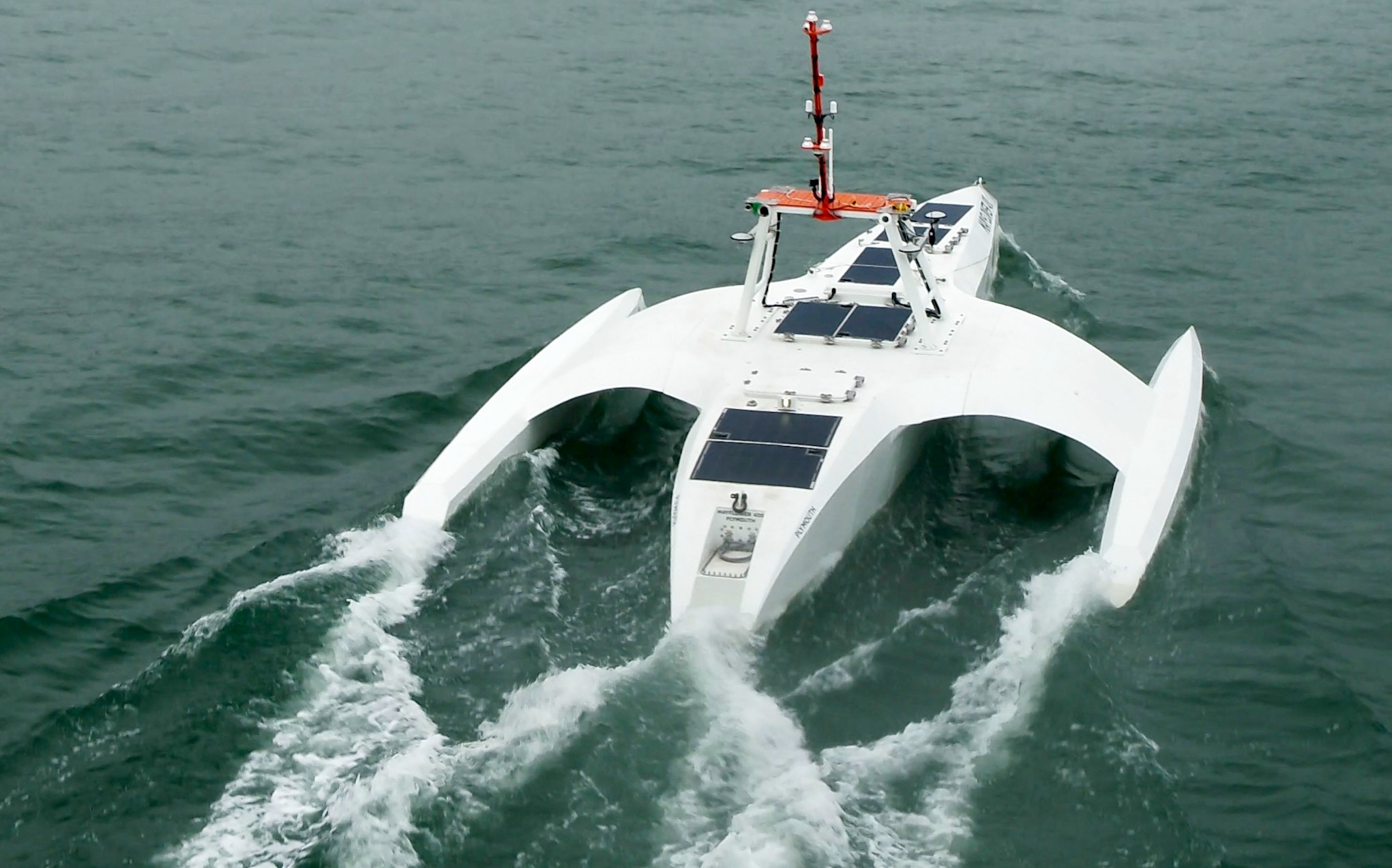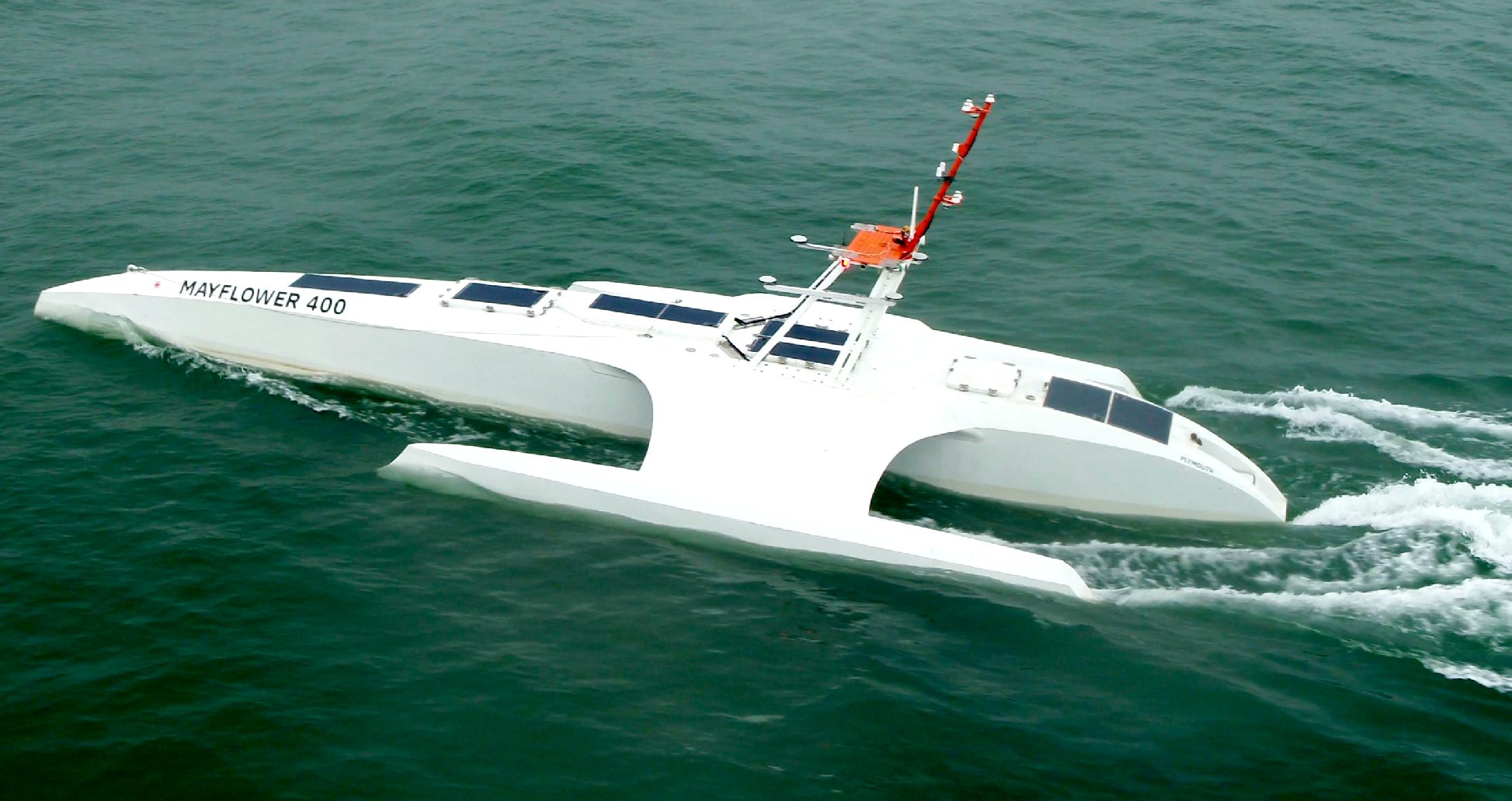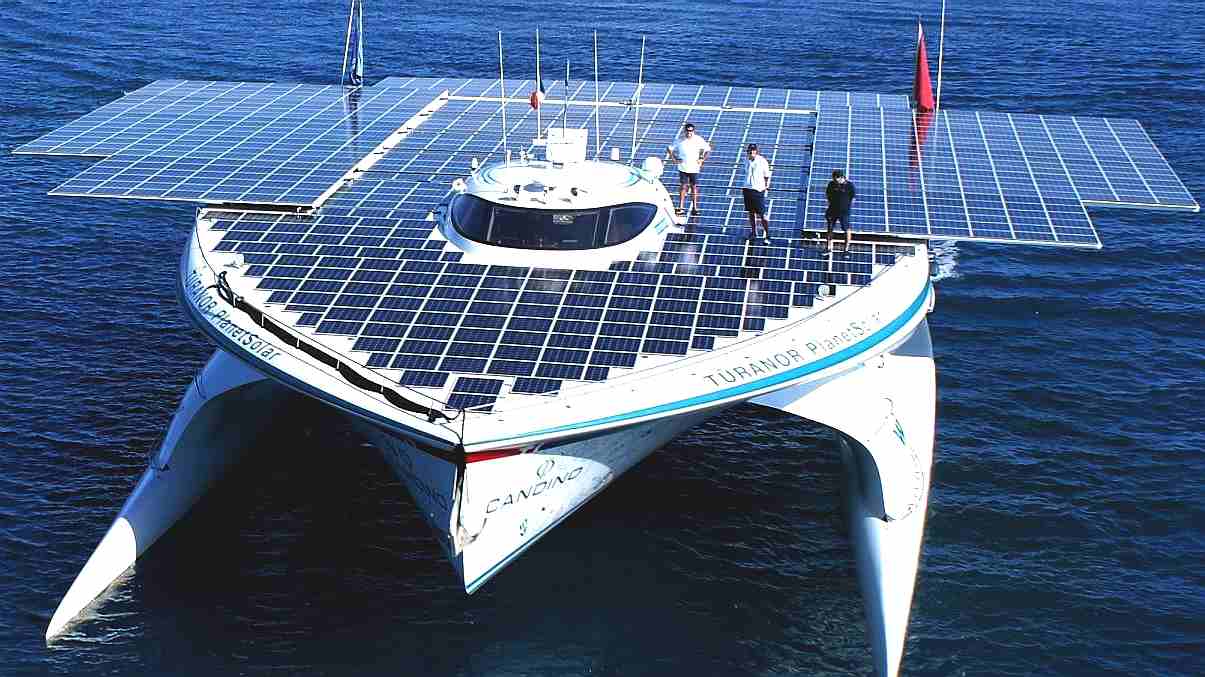
MAYFLOWER
ATLANTIC VOYAGE - The Mayflower's direction of travel is the reverse of the
Scout and Voyager autonomous Atlantic
attempts that took advantage of trade winds. The Mayflower will be
heading into prevailing winds and currents. If sail powered, she would need to tack. But powered by a
diesel
engine, with support from the deck mounted solar panels, there may be no need for
that - except, that we saw her struggling when out at sea. Energy from nature is used to power the onboard AI and
satellite
comms. Many media reports inaccurately refer to wind power as a feature
of the MAS, but you can plainly see that there is no wind turbine or
wing-sail.
AI NEWS 18 JUNE 2021 - IBM'S EDGE AI CAPTAIN POWERED SHIP MAYFLOWER SETS SAIL
IBM’s fully-autonomous edge AI-powered ship Mayflower has set off on its crewless voyage from Plymouth, UK to
Plymouth, USA.
The ship is named after the Mayflower vessel which transported pilgrim settlers
from Plymouth, England to Plymouth, Massachusetts in
1620. On its 400th anniversary, it was decided that a Mayflower for the 21st century should be built.
Mayflower 2.0 is a truly modern vessel packed with the latest technological advancements. Onboard edge AI
computing enables the ship to carry out scientific research while navigating the harsh environment of the
ocean - often without any connectivity.
“It will be entirely responsible for its own navigation decisions as it progresses so it has very sophisticated software on
it - AIs that we use to recognise the various obstacles and objects in the
water, whether that’s other ships, boats, debris, land obstacles, or even marine life,”
Robert
High, VP and CTO of Edge Computing at IBM, recently told Edge Computing News in an interview.
The Weather
Company, which IBM acquired back in 2016, has been advising on the departure window for Mayflower’s voyage. Earlier this week, the Mayflower was given the green light to set sail.
Mayflower’s AI captain is developed by MarineAI and uses IBM’s
artificial intelligence powers. A little fun fact is that the AI had to be trained specifically to ignore seagulls as they could appear to be large objects and lead to Mayflower taking unnecessary action to maneuver around them.
The progress of Mayflower can be viewed using a dashboard built by IBM’s digital agency iX.

A livestream from Mayflower’s onboard cameras is also available, but it can understandably be a little temperamental. IBM partnered with Videosoft, a company that specialises in live-streaming in challenging environments, to enable streaming over speeds of just 6kbps. However, there are times when Mayflower will be
fully-disconnected - which even the best algorithms can’t overcome.
If the live-stream is currently available, you can view it online.
Unlike its predecessor, Mayflower 2.0 won’t be reliant solely on wind power and will employ a
wind/solar hybrid propulsion system with a backup
diesel generator.
[not sure if accurate] The new ship also trades in a
compass and nautical charts for
navigation in favour of a state-of-the-art GNSS positioning system with SATCOM,
RADAR, and LIDAR.
A range of sensors are onboard for scientific research including acoustic, nutrient, temperature, and
water and air samplers. Edge devices will store and analyse data locally until connectivity is available. When a link has been established, the data will be uploaded to edge nodes onshore.
Mayflower is a fascinating project and we look forward to following its voyage. AI News
say they will keep you updated on any relevant developments. By
Ryan Daws

TRANSATLANTIC
EVENT CALENDAR 2021
The
IBM Mayflower
MAS 400 is an
autonomous
trimaran powered by a
diesel
engine, piloted by a solar powered artificially intelligent
computer
system developed by IBM called 'AI Captain.'
A
BIT OF HISTORY
The
first solar boat to travel around the world was the PlanetSolar,
coming home on the 4th of May 2012. Computing power was not as advanced
as it is today, when PlanetSolar set off on 27th September 2010,
following the Sunshine Route, first shown in London at the 1994/95 Boat
Show. Then in January 2013 a patent specification for a COLREGs
compliant, unmanned autonomous navigation system was filed by a BMS
engineer ( now our IP) with the suggestion in 'Claims' for using a solar
powered trimaran (patent granted 12 June 2019) as a suitable hull
configuration. This patent also included wind energy harvesting as
originally advertised for the Mayflower 400.
JOURNEY
TIME
The original wooden
30-meter Mayflower took 66 days to carry
the Pilgrims,
Founding Fathers from the U.K. to what is now the U.S. The voyage would
have involved a lot of tacking,
because sailing ships cannot sail directly into the wind. But the new
sail-less aluminium
boat should take two to three weeks (14-21 days) depending on how strong
the prevailing trade
winds are, and assuming no technical glitches or marine accidents -
the whole point of the COLREGs
compliant navigation
system.
LINKS,
CONTACTS & REFERENCE
https://www.washingtonpost.com/technology/2021/06/18/mayflower-ibm-autonomous-ship/
https://www.washingtonpost.com/technology/2021/06/18/mayflower-ibm-autonomous-ship/
https://www.news4jax.com/business/2021/06/18/ai-powered-mayflower-beset-with-glitch-returns-to-england/
https://oceancrew.org/news/unmanned-vessel-mayflower-set-off-on-a-transatlantic-voyage_19-06-2021/
https://www.autoevolution.com/news/ai-powered-trimaran-mayflower-suffers-glitch-ahead-of-unmanned-atlantic-crossing-163547.html
https://artificialintelligence-news.com/2021/06/18/ai-captain-ibm-edge-ai-powered-ship-mayflower-sets-sail/
https://www.washingtonpost.com/people/dalvin-brown/
https://www.washingtonpost.com/people/dalvin-brown/




